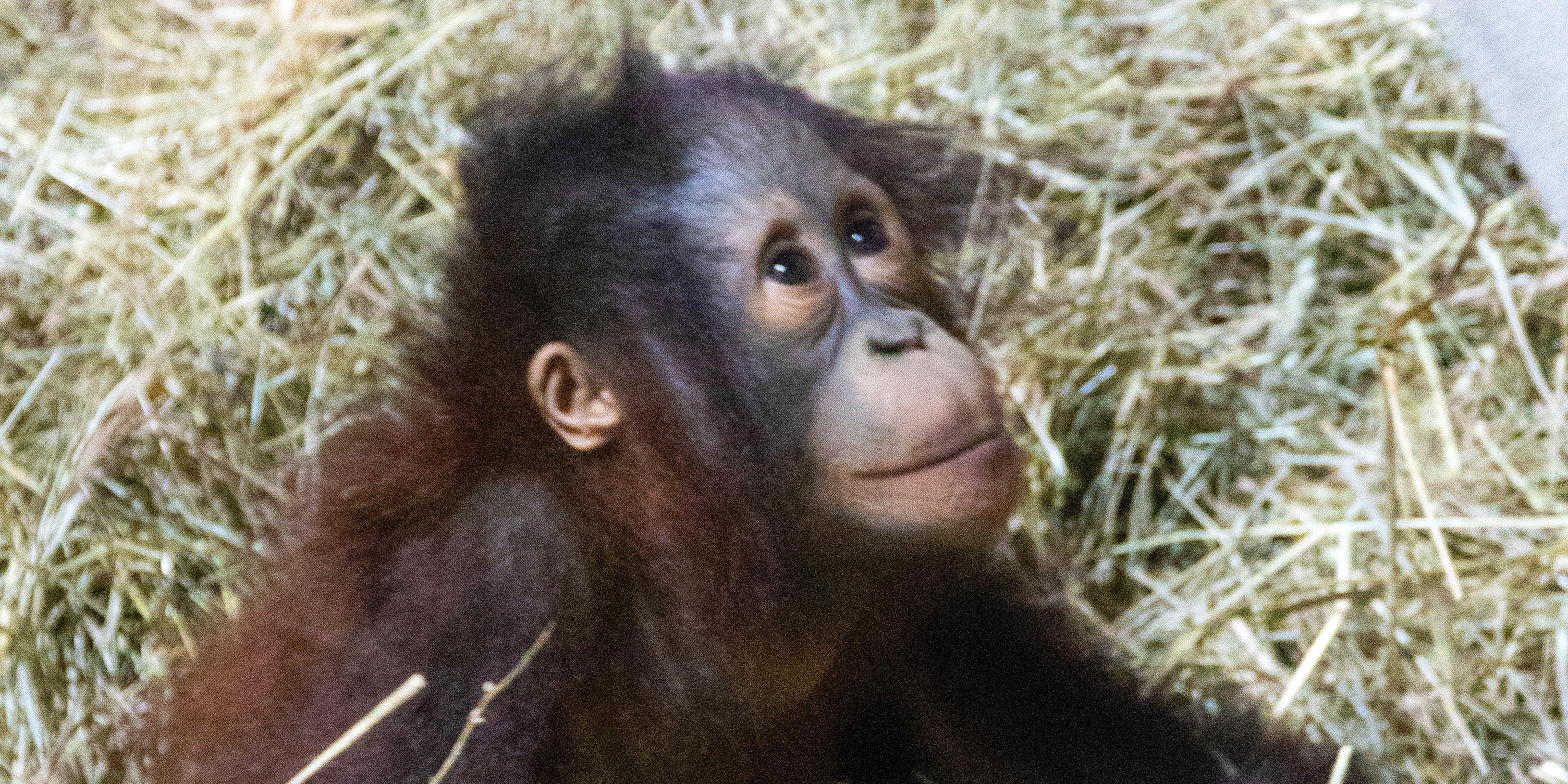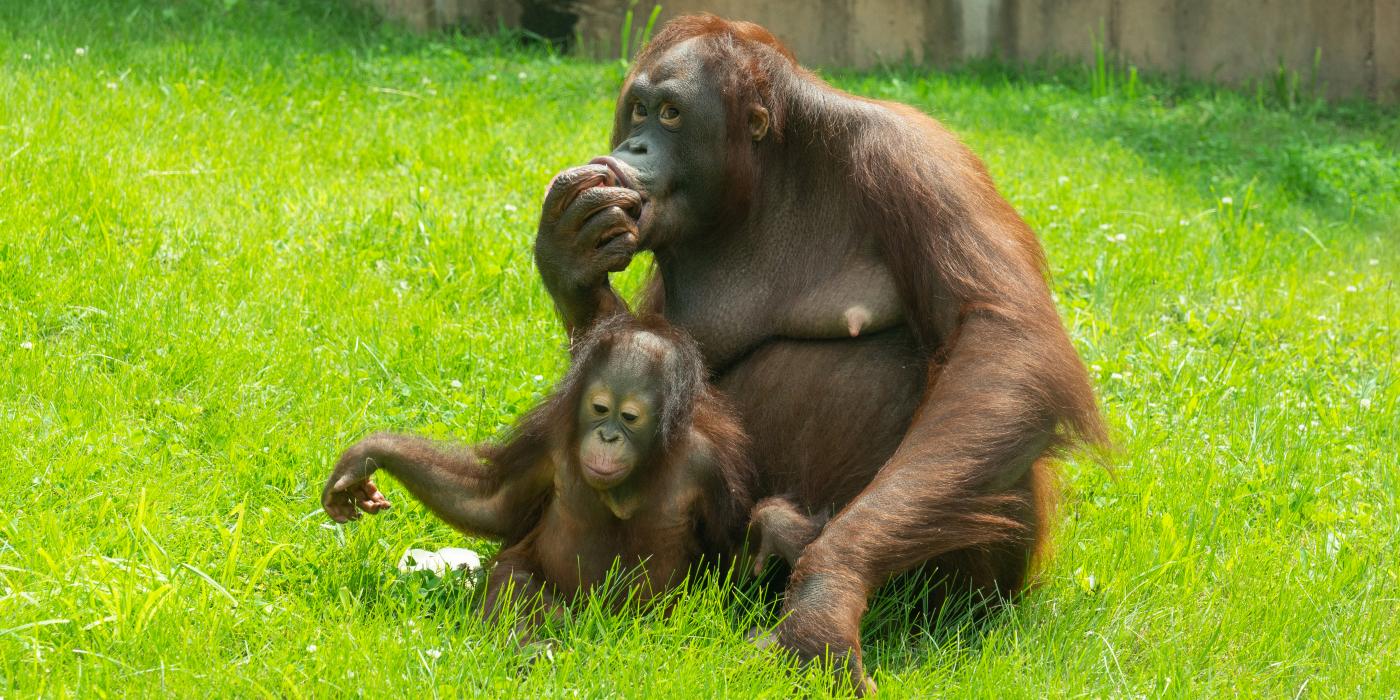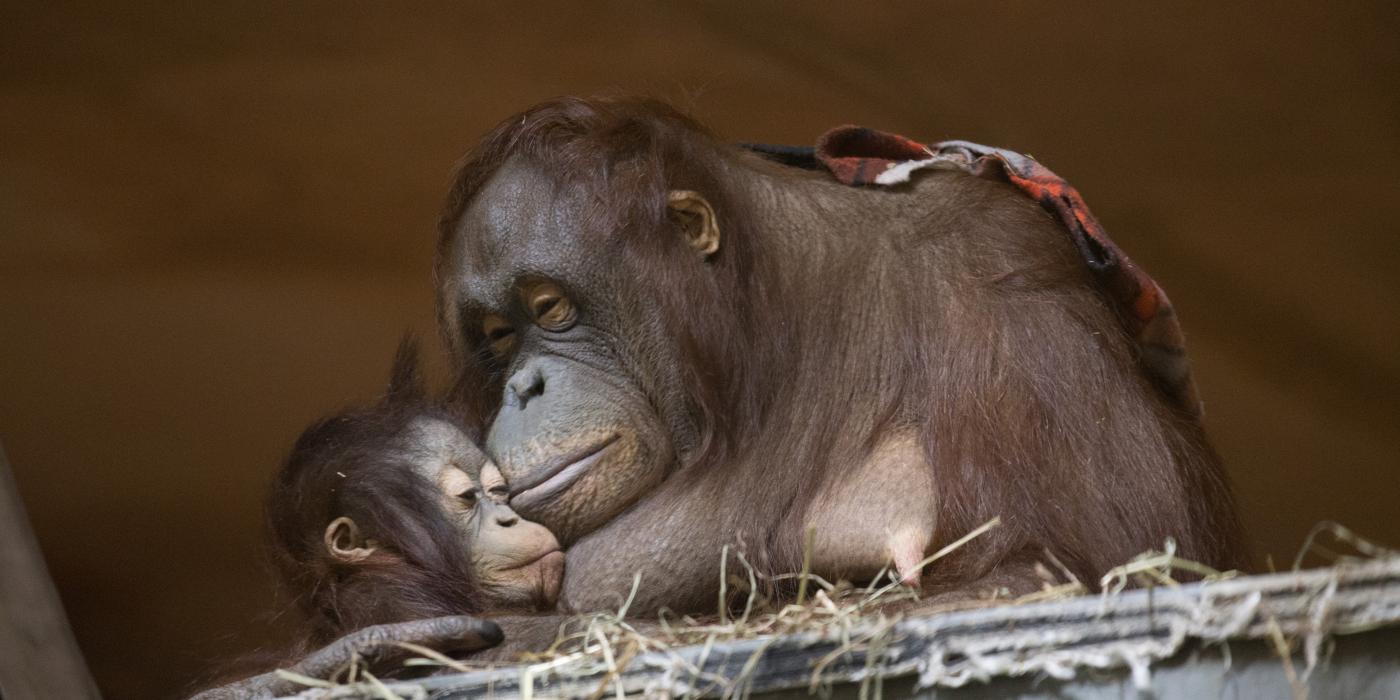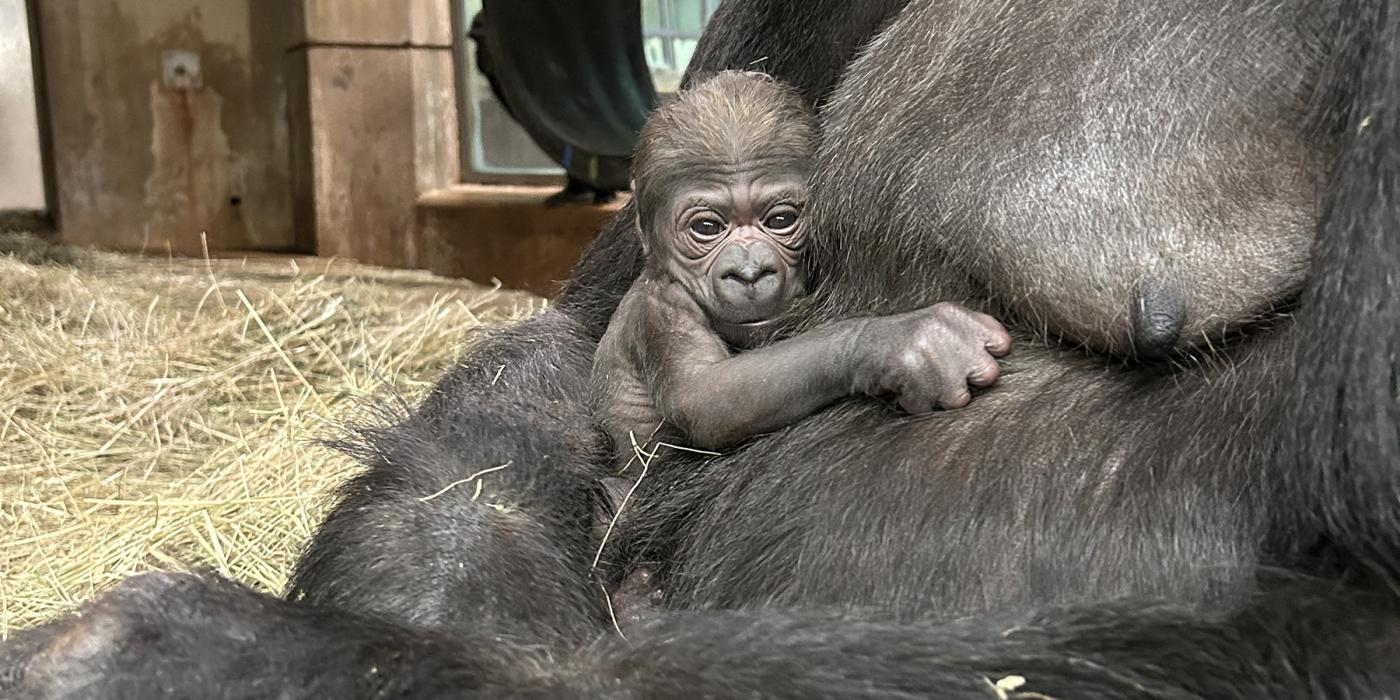#OrangutanStory Update: Redd Is Turning Two
The Smithsonian’s National Zoo’s charismatic Bornean orangutan infant, Redd, will celebrate his second birthday Sept. 12! Since our last update in February, he has hit some major milestones. He has even started traveling sections of the O-Line independently from time to time. Get the latest scoop on this playful primate from animal keeper Erin Stromberg.

How has Redd’s personality developed over the past six months?
Redd is still a rambunctious toddler! He is always exploring his habitat, investigating new toys or other enrichment items and, in general, spending the majority of his day playing with his mom, Batang.
That pair has a very strong bond. But, as he gets older and becomes more independent, he also seems to be a bit more defiant! When he is in a mood, Batang will pick him up by the leg and carry him away. Now that he has a full set of teeth, however, his play biting seems to try her nerves at times. Perhaps that is why Batang has been more lenient in letting Redd spend time with Bonnie, Iris and Lucy. When Batang is comfortable, she will let Redd climb all over them.
Although Redd’s father, Kyle, and our other adult male, Kiko, have behaved entirely appropriately around the toddler, Batang is quite cautious when they are near. She has allowed them to reach out and gently touch Redd, and it is clear that he is enamored with these two large males. However, if Redd tries to get close to them, Batang will pull him back towards her. In time, as Redd grows older and stronger, Kiko and Kyle will have more opportunities to interact and play with Redd.

How exciting was it to watch Redd cross the O-Line for the first time?
It was really exciting—and nerve-wracking! Before Redd got the courage to try crossing the O-Line on his own, he would be draped across Batang's neck whenever she crossed the cables. Occasionally, he would reach up to touch them but never fully let go of mom.
Then, on Memorial Day, Batang stopped to survey the large crowd of visitors below. Redd reached up, grabbed ahold of the cables and starting traveling to the next tower on his own!
Redd is still a little guy, weighing just over 16 pounds. Orangutan infants take a long time to become full grown, much like human children. Where the cables attach to the towers, the distance between them is too far for Redd to hold both. In this instance, he will shimmy across on just one cable. They sway and run closer together in the center, so once Redd reaches that sweet spot, he will grab the upper and lower cables at the same time.
What is Redd’s favorite enrichment toy these days?
Lately, he has shown a lot of interest in fleece blankets. We give all of our orangutans blankets—along with natural materials such as hay and leafy browse—as nesting materials. Redd, however, will wrap himself up in the fleece, use the blanket as part of his somersault routine and will cover himself to “hide” from Batang. At this age, everything captures his attention, so we rotate as many toys as we can through the habitat.
All of our orangutans receive multiple types of enrichment throughout the day to keep them physically active and their minds sharp. Redd enjoys a whole host of enrichment items, and many of his toys are well-loved and worn. Fans can give Redd a birthday gift by making a donation to the animal enrichment program! Every dollar goes towards purchasing new toys, puzzle feeders and other items that encourage our orangutans to explore, play and use their natural foraging skills.
Is Redd trying new foods?
Our Department of Nutrition Sciences commissary team prepares meals for all of our orangutans. Redd has his very own little diet bin. He receives the same types of food as the adult orangutans—greens, green beans, carrots, broccoli, bananas, apples and primate chow, among other fruits and vegetables—just in smaller quantities.
We see Redd nurse from Batang several times throughout the day, and he will continue to do so until he is six or seven years old. We often see him nurse when he is overly tired, or when he is having a bit of a temper tantrum because Batang has not let him get his way.

How is Redd’s training progressing?
Since February, Redd has learned several new behaviors through our positive reinforcement training program. He continues to master the art of stationing at his yellow Frisbee and will climb to it whenever a keeper hangs it on the mesh. When he does this behavior, we reward him with one of his favorite foods: banana, grapes and peanuts. Redd is an exceptional student, though he still has a pretty short attention span, typical of any toddler.
In addition, Redd is learning to present his body parts on cue. He has since mastered showing us his nose, as well as turning around and presenting his back. These are all important husbandry behaviors that help us build trust with Redd and enable us to do daily, stress-free health check-ups.
Since we train all of our orangutans to provide urine samples when asked, we are working with Redd to put this behavior on a cue. He ends up urinating on us quite frequently! (The distance he covers is pretty impressive, too.)
Where and when is the best time to see Redd?
Batang and Redd choose to spend the majority of their time at Think Tank. Now that we are in summer and it is quite hot during the afternoon, visitors will find the orangutans most active in the morning, especially when they first have access to the O-Line.
I encourage visitors who want to see Redd to stop by the Think Tank for our 1:30 p.m. research demonstration. Following these keeper chats, we are happy to take questions about our orangutans and share the latest news about them. Quite often, Batang and Redd are spending time in the exhibit, and it is a great way to see them up close.
This story was featured in the August 2018 issue of National Zoo News.
Related Species:




